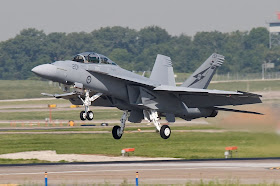
NORFOLK, Va. (NNS) -- Thousands of family and friends gathered at Naval Station Norfolk, July 30 to welcome home Sailors from the Nimitz-class aircraft carrier USS Dwight D. Eisenhower (CVN 69) (Ike) following a five-month deployment supporting Operation Enduring Freedom (OEF) and maritime security and coalition operations in the 5th Fleet and 6th Fleet Areas of Responsibility.
"I could not be more proud of the men and women embarked on Dwight D. Eisenhower as part of the Eisenhower Carrier Strike Group. They have performed magnificently this entire deployment," said Capt. Dee L. Mewbourne, commanding officer, USS Dwight D. Eisenhower. "Safely operating both in the air and on the sea over the past five months, often in arduous conditions, they supported coalition forces on the ground in Afghanistan with utmost professionalism while providing regional security and stability. Without question, their service made a difference."
During the deployment, Ike and embarked Carrier Air Wing (CVW) 7 conducted more than 4,600 flight sorties totaling more than 16,000 hours with a 99% sortie completion rate. Of those operations, 2,010 were combat sorties supporting American and Coalition forces on the ground in Afghanistan.
CVW-7 squadrons – Strike Fighter Squadrons (VFA) 143, 131, 103, and 83; Airborne Early Warning Squadron (VAW) 121; Electronic Attack Squadron (VAQ) 140; and Helicopter Anti-Submarine Squadron (HS) 5 all returned to homeport earlier in the week.
In addition to carrying out the Navy's mission, Ike made a historic visit to the Kingdom of Bahrain. It marked the first time a nuclear powered carrier pulled pierside in Bahrain. The last conventional carrier to pull pierside in Bahrain was USS Rendova in 1948.
Ike hosted His Majesty the King Hamad bin Isa Al Khalifa of Bahrain; the first U.S. Naval Officer appointed as the Supreme Allied Commander, Europe, Admiral James Stavridis; the Secretary General of the North Atlantic Treaty Organization; the Prime Minister of Lithuania and dignitaries and military officials from Libya, Poland, Algeria, and France.
Nearly 4,500 Sailors from Ike proudly carried on the Navy's tradition of ambassadorship during overseas port visits to Bahrain, Dubai, Marseilles, France and Lisbon, Portugal. Over 280 Sailors contributed 1,715 hours of international community service ashore.
With the deployment completed, Ike Sailors will enjoy some well deserved time off before heading out to sea again for an upcoming work up cycle.
"We set out to accomplish three goals: to do it right, to do it safe, and make America proud. I think we've met those goals and now I'm anxious to get back and be with my wife and son," Hospital Corpsman 2nd Class(SW/AW) Daniel Flood.











